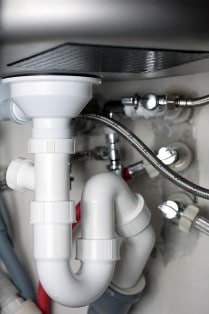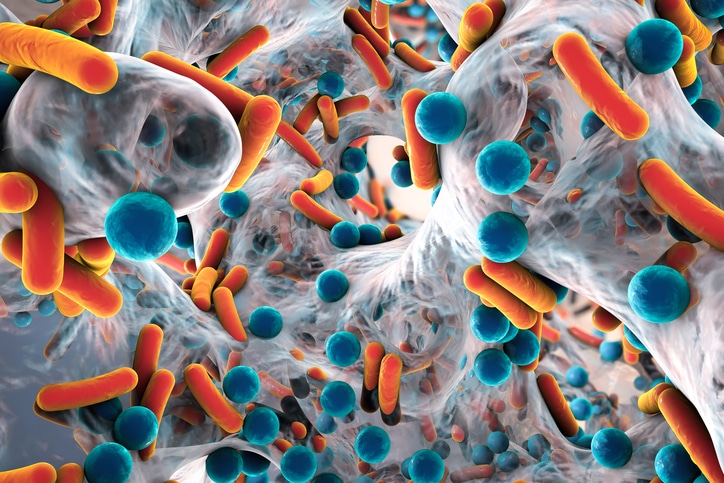It’s like something out of a Hollywood sci-fi movie… A deadly blob incubates in a secluded hospital location. Then it slowly creeps up through the plumbing, until it finds humans….and kills them.
But this isn’t fiction.
It is happening in hospitals all across America.
Researchers from the University of Virginia Health System recently set out to determine how deadly antibiotic-resistant superbugs were spreading.
Despite strict handwashing protocols, disinfecting regimens, and other measures, hospitals have not been able to stop the lethal germs. Scientists think they’ve finally discovered why: The superbugs are in the plumbing.
And once they colonize the pipes inside hospitals, it’s very hard to get rid of them.
Recommended for You: Are YOU Infected? [See the Photos]
Up to 223 million Americans already have this insidious bug living inside of them. Men, women, children, seniors. Most have no idea. And they certainly don’t know that some experts are now saying that this common, but little-known, bug is a leading cause of cancer. A recent review in Critical Reviews in Microbiology confirms that it “is capable of promoting cancer by several mechanisms.”
Go HERE to find out if you’re harboring this secret cancer bomb.
Dr. Amy Mathers is a professor of infectious disease at the University of Virginia. She and her colleagues conducted an experiment to determine if sinks could be the source of the hospital superbug plague. They reported their results in the journal Applied and Environmental Biology.1
Researchers already knew that bacteria can thrive in sink traps. These are the U-shaped pipes below sinks. They stay filled with water and they serve to stop unpleasant smells from emerging from the sewer.

Researchers had figured that if any dangerous bacteria were in the sink trap, they would remain there. And most hospitals periodically pour cleaning chemicals down sinks. So they assumed this would kill any pathogens in the upper levels of plumbing.
For their experiment, scientists used five of the most common types of sinks found in intensive care units. They introduced E. coli bacteria into each of them. Though E. coli is not a superbug, it shares many of the same biological properties as many antibiotic-resistant germs.
The research team found that the bacteria introduced to the trap grew at a steady pace of about one inch per day up the pipe. Finally, after about a week, they emerged into the bottom of the sinks.2
Once the bacteria had crawled up the pipes, it was extremely hard to kill. High-pressure water blasts didn’t work. Bleach-based products didn’t completely kill them. Even heating the pipes didn’t work.
“The bacteria stayed adherent to the wall of the pipe,” Dr. Mathers said. “They get established and they don’t readily wash away.”
It gets worse…
If water from the faucet hit directly on part of the sink contaminated with bacteria, the germs sprayed into the air. They landed up to two feet away from the sink.
That means sinks infect hand washers—even as they attempt to do the exact opposite by cleansing themselves of bacteria.
But the spread of the resilient superbug didn’t stop there. The five sinks in the experiment had interconnected plumbing. Researchers found that the germs not only move up into the sink, they also spread down into the plumbing…and emerge in nearby sinks.3
How Deadly Are Superbugs?
When sinks become infested, people die.
Every year about 25,000 Americans die from antibiotic-resistant bacteria. They sicken 2 million others. There have been at least 300 superbug outbreaks in the U.S. over the past six years.
A recent outbreak of the superbug Clostridium difficile (C. diff) in a New Mexico assisted-living facility killed eight residents.4
The World Health Organization has called superbugs a “global crisis.”
Researchers blame the global outbreak on overuse of antibiotics. When doctors overprescribe antibiotics, your body becomes resistant to their healing power. And then, when you really need them, they don’t work.
Factory farms give antibiotics to cows, chickens, and other livestock. The drugs make meat cheaper to produce. But it also means that you’re getting a small dose of antibiotics every time you eat non-organic meat.5
Children and the elderly are most at risk, say researchers. This is because their immune systems are less robust. But anyone can fall victim to superbugs.
Building a Better Sink
The good news is that the study identifies a way superbugs can be reduced…by reconfiguring pipes and changing the shape of sink basins.
“Sink design is a big deal,” said Dr. Tara Palmore. She’s the hospital epidemiologist at the National Institutes of Health Clinical Center.
In the wake of the study, efforts have begun to engineer handwashing sinks so that they can’t harbor superbugs.
Protect Yourself from Superbugs
In the meantime, what can you do to protect yourself?
First, stay away from antibiotics unless absolutely necessary. Before taking them, have your doctor run tests to make sure your illness is bacterial. Antibiotics do nothing to stop a virus, like the flu.
Eat only meats raised without antibiotics. Look for the USDA organic label. The healthiest source of meat is grass-fed animals. Make sure your eggs are from pasture-raised organic chickens.
If you are in the hospital, insist that your doctors and nurses use antiseptic wipes or hand sanitizer—even after they have washed their hands.
Ask if your hospital bleaches their sinks daily. The new study shows sink bleaching doesn’t eliminate superbugs, but it can keep them at bay. If your hospital doesn’t practice plumbing disinfection, click here to show your doctor or a member of the hospital administration this study.
Like this Article? Forward this article here or Share on Facebook.
References:
1http://www.nbcnews.com/health/health-news/study-tracks-how-superbugs-splash-out-hospital-sink-drains-n725426
2http://aem.asm.org/content/early/2017/02/13/AEM.03327-16.full.pdf+html
3http://aem.asm.org/content/early/2017/02/13/AEM.03327-16.full.pdf+html
4https://www.institutefornaturalhealing.com/2017/01/hospitals-keep-lethal-superbug-outbreaks-secret/
5https://www.institutefornaturalhealing.com/2015/11/the-superbug-threat-youll-never-see-coming/

